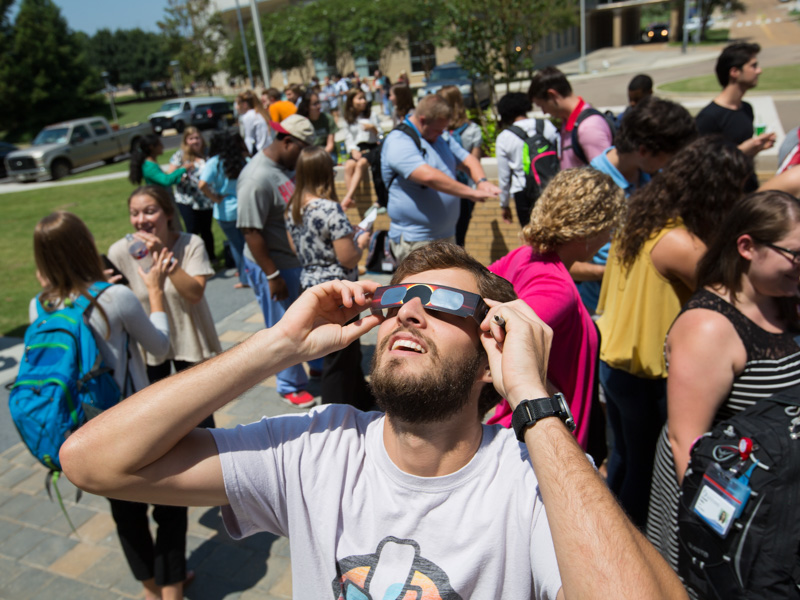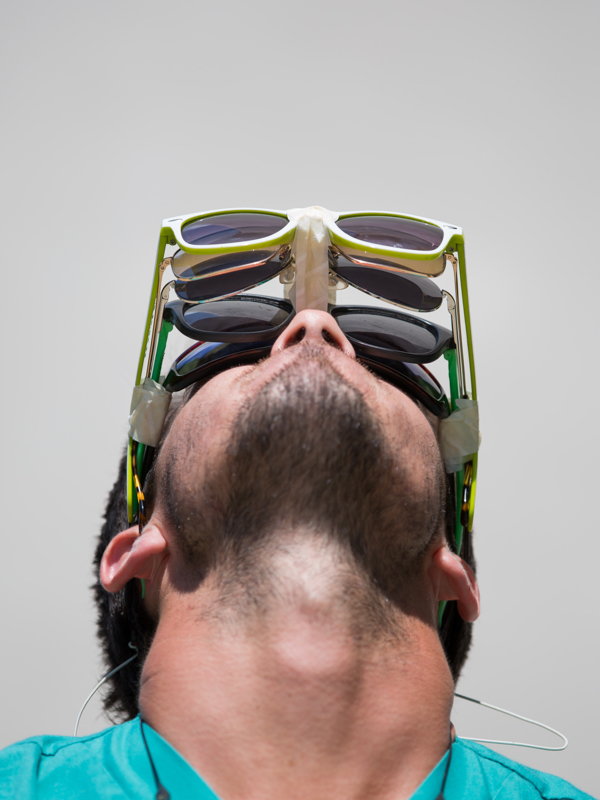No shadow of a doubt: The eclipse can ruin your vision

As the Solar Eclipse of 2024 looms, beware: The face of the sun may not be the only thing that will fade.
Other potential disappearing acts include bird songs, cumulus clouds – and your eyesight.
“If you choose to view the eclipse, please follow recommended precautions and take the information seriously,” said Dr. Kimberly Crowder, professor and Drs. Ching-Jygh and Lin Chen Chair for Excellence in Ophthalmology at the University of Mississippi Medical Center.

“Even brief amounts of exposure to ultraviolet radiation can cause permanent damage to the eyes, even blindness. Unfortunately, we saw patients with damage after the last eclipse a few years ago and, while we are always happy to have new patients, we hope to not have new patients due to the eclipse.”
While a narrow swath of the U.S. will be treated to a total eclipse today, Jackson residents will see the moon’s shadow take an 89 percent bite out of the Earth’s star, according to the Mississippi Department of Wildlife Fisheries and Parks’ Mississippi Museum of Natural Science.
In the capital city, the orbital obfuscation will begin at 12:33 p.m., peak at 1:52 p.m., and let the sun shine in fully again by 3:11.
But it won’t require hours of eclipse-gazing to take a bite out of your vision if done with the naked eye – or even, in many cases, when it’s fully clothed: Eyeing an eclipse through a camera lens, telescope or binoculars is also an invitation to severe vision injuries.

“With the naked eye, there is no set rule for how long it could take,” said Dr. Khushboo Agrawal, assistant professor of ophthalmology at UMMC.
“It could be a glance, a few seconds of looking, or prolonged staring; but even with a quick glance, the UV light from the sun’s rays is so powerful that when it strikes the most light-sensitive area of your retina, permanent damage, called solar retinopathy, can result.
“It also depends on visibility, cloudiness, how much pollution is in the air – all of those affect how much UV light exposure you’ll receive. It’s also based on your own personal eye health.”
Solar eclipses can be magnificent or calamitous, depending on how you view them. Literature and popular culture prefer calamity: Witness Mark Twain’s “A Connecticut Yankee in King Arthur’s Court,” and such movies as “The Little Shop of Horrors,” “Avatar: The Way of Water,” and “Barabbas” – specifically, the crucifixion scene.
To prevent your own personal calamity, heed the experts.

“When we look up at the sun or at bright UV light sources, radiation penetrates the fovea, the most light-sensitive area of the retina, and damages the photoreceptors,” Agrawal said.
“As a result, we are left with a blind spot in our central vision. For the most part, many people might describe distortion in their vision, or, in the case of a partial eclipse, a crescent-shaped blind spot in their retina.
“Because the retina doesn’t have pain receptors, you won’t feel pain or discomfort while looking at the sun; but, afterward, we will see the damage to the photoreceptors — typically, right away.
“During the week after an eclipse, my colleagues and I will get phone calls from people saying, ‘I looked at the eclipse, and my vision is blurry.’”
Indirect viewing is safe, in which case, a pinhole projector or camera serves the purpose. The American Academy of Ophthalmology offers other safe-viewing tips, and where to find reputable vendors of handheld viewers and solar eclipse glasses, courtesy of the American Astronomical Society.
“Get viewers or glasses from a trusted source only,” Agrawal said. Certain online retailers fail to fall under that category, she said. “The viewers and glasses that provide safety will filter out UV light and allow you to view the eclipse directly.”
Agrawal, too, is planning to catch the eclipse — in all of its 100-percent glory, after traveling to Little Rock, Arkansas, in the path of totality, to view it with her children.
“It’s an awesome experience” she said, “ but it can be dangerous if we’re not careful. Take simple precautions, and you’ll have a great viewing experience.”


